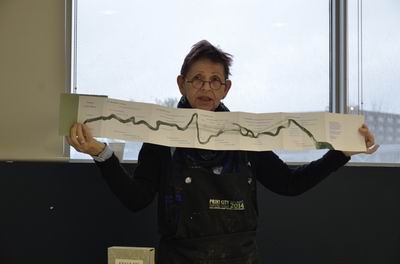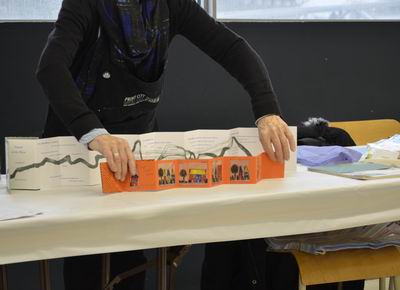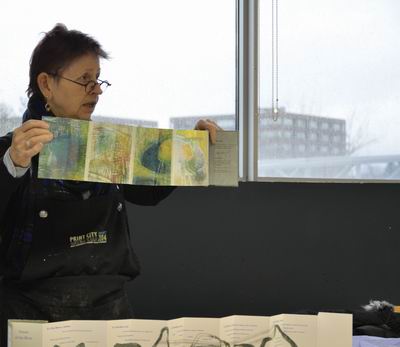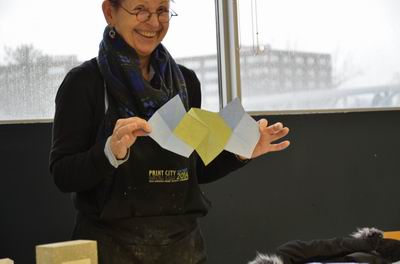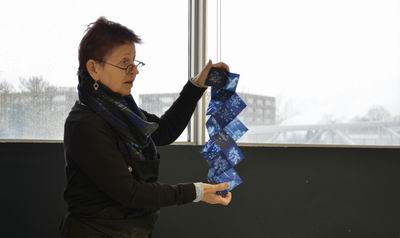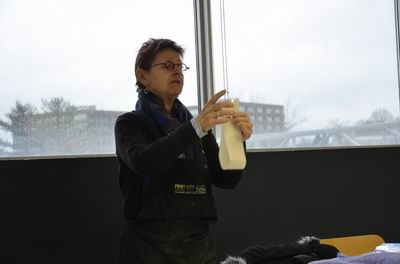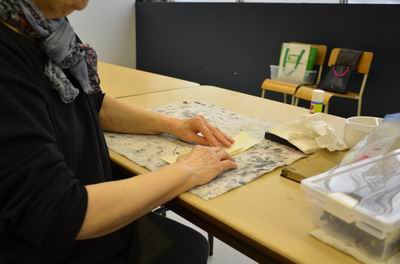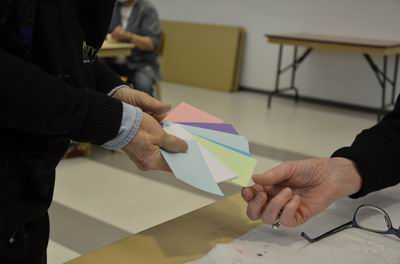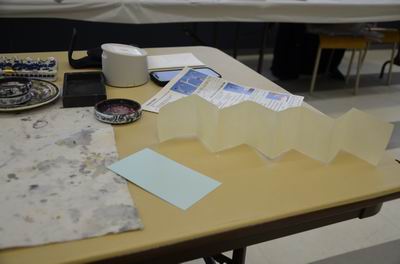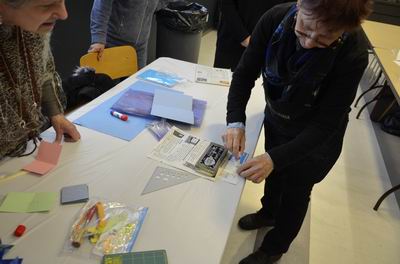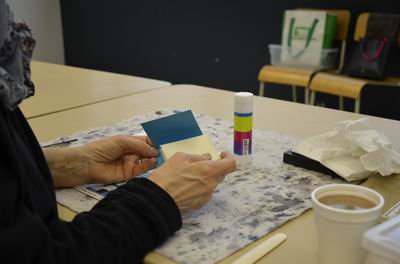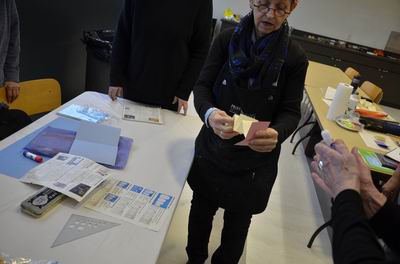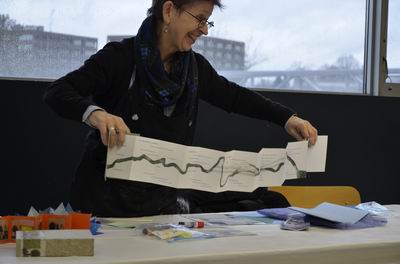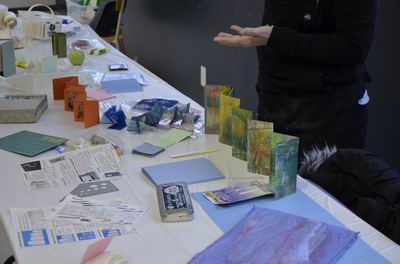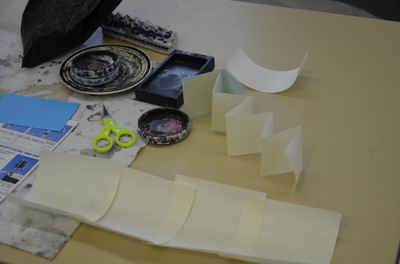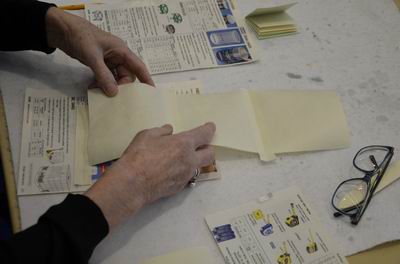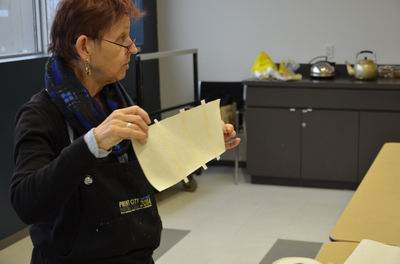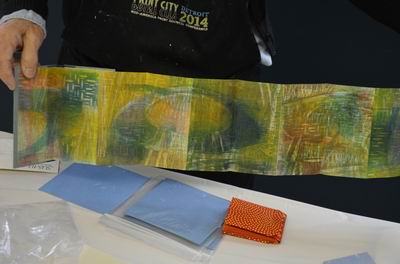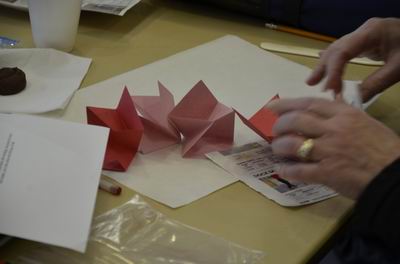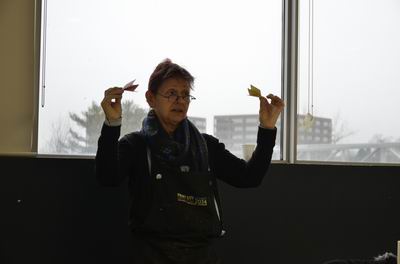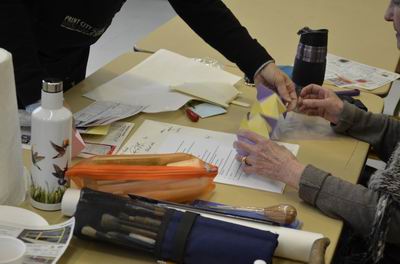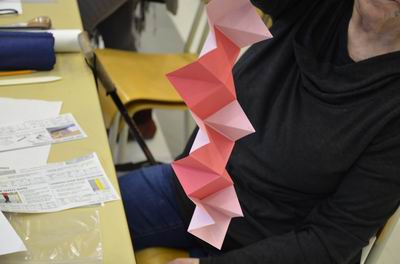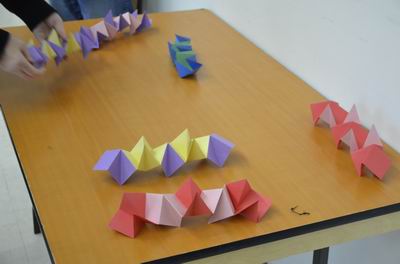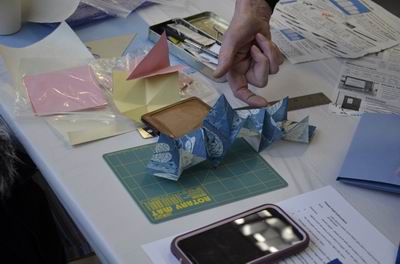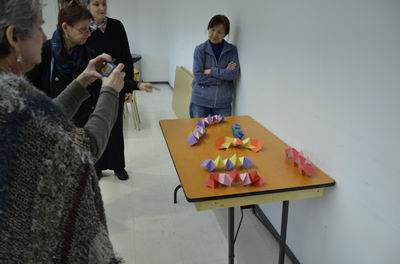Making Art Books with Liz Menard - March 9th, 2024
Making books for your art creates a portable way of showing your art. Liz Menard began her workshop by showing the three books artists would build. The first book was created with one continuous page. Liz Menard used this style of book to illustrate the Don river in Toronto.
Another continuous page book had homes on the pages.
The second book the artists would build joined several separate pages.
The third book the artists would build was based on origami folding paper techniques.
This origami technique can turn artwork into a decoration.
Liz Menard provided the artists with kozo paper and showed how to fold the paper in two for the first art book.
Artists followed Liz Menard to make more folds in the art book that would be a continuous strip of paper.
Covers were given out.
The goal was to put the cover on the strip of folded paper.
Putting the glue on is similar to other times that artists have worked with glue: start at the center and work outwards.
Artists were successful in getting the cover on their first art book.
The result is a continuous page that can be stretched once you open the cover.
Liz Menard's book on the Don river is a good example of this kind of book for artists: a subject that requires a long page to show a story.
The next book looked like the first book with what seemed like a continuous page that has been folded; however, the difference is that it was several separate pages joined at the fold.
Liz Menard had artists create the separate pages by folding a sheet of kozo paper and cutting the equal size pages.
Then artists used smaller strips of kozo paper and glue to join the pages. Liz Menard reminded the artists that paper has memory. Joining the paper had to be made at the point where folds had been made prior to cutting the separate pages.
The result is similar to a continuous page of paper though with separate pages bound together.
Use this type of book when you have images on separate pieces of paper that could be associated in a book. Perhaps you have a collection of fish paintings that could be put together as a book of fish artwork.
Using origami folding, specifically the flower fold, with two coloured pieces of paper was challenging for the artists. However they succeeded by carefully following Liz Menard.
Then the artists had to glue the two pieces together.
Even though Liz Menard provided instructions for the folding and gluing, Liz Menard was also available to help with the assembly work.
The artists surprised themselves with their origami skills.
A table showed our collective successes.
Use this type of structure when you have abstract artwork to turn into a decoration.
The artists gathered to congratulate themselves on their progress.
You can learn more about Liz Menard in the links section.
